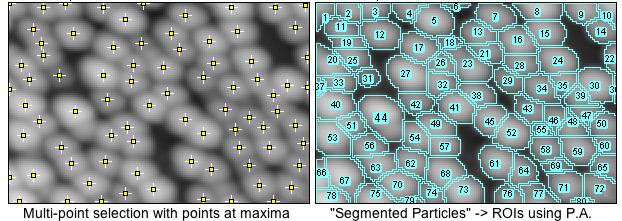
.jpg)
Kernel-based filters apply a structuring element to the image and can generally be extended to dimensions higher than 3D, to find computationally efficient solutions for 4D and higher dimensions is subject of ongoing research. There are two major approaches to image thinning: a) kernel-based filters and b) decision trees. Care has to be taken in order not to create holes or cavities in the object. Erosion has to be performed symmetrically in order to the guarantee medial position of the skeleton lines and such that the connectedness of the object is preserved. The general idea is to erode the object’s surface iteratively until only the skeleton remains. The resulting skeleton image will have pixel value 255 at the skeleton and 0 at the background (black) pixels.Īs Hanno Homman explains in his paper, binary thinning is used for finding the centerlines (“skeleton”) of objects in the input image. If not, all pixel values above 0 will be considered white. Computer Vision, Graphics, and Image Processing, 56(6):462–478, 1994.” Based on the ITK version from Hanno Homann: It works with 8-bit images and stacks. “Building skeleton models via 3-D medial surface/axis thinning algorithms. This work is an implementation by Ignacio Arganda-Carreras of the 3D thinning algorithm from Lee et al. Analyze the resulting skeletons in the 3D image with AnalyzeSkeleton.Extract the skeleton of a binary image with Skeletonize3D.Pre-process a 3D image to extract the relevant morphological information by.

The tutorial describes step by step how to: Video tutorialįor a fast introduction to Skeletonize3D and AnalyzeSkeleton and an example of a real application, you can have a look at this video tutorial. If you need to analyze a 2D/3D skeleton image, you may be interested on having a look at AnalyzeSkeleton. In Fiji, you can find it under Plugins › Skeleton › Skeletonize (2D/3D). Split a 32-bit color image into RGB or HSV components and merge 8-bit components into a color image.Skeletonize3D is a Fiji and ImageJ plugin that performs the skeletonization of 2D and 3D binary images (8-bit images). Measure the area, mean, standard deviation, min, and max of entire image. Supports smoothing, sharpening, edge detection, median filtering, and thresholding on both 8-bit grayscale and RGB color images. Create rectangular, elliptical, or irregular area selections. All analysis and processing functions work at any magnification factor. Tools are provided for zooming (1:32 to 32:1) and scrolling images. Open TIFFs, GIFs, JPEGs, DICOMs, and raw data using a URL. Open and save GIF, JPEG, BMP, PNG, PGM, FITS, and ASCII. Open and save all supported data types as TIFF (uncompressed) or as raw data. It 8-bit grayscale or indexed color, 16-bit unsigned integer, 32-bit floating-point, and RGB color data types. Use ImageJ as an image processing toolkit (class library) to develop applets, servlets, or applications. Extend ImageJ by developing plugins using ImageJ's built in text editor and Java compiler.
#Nih imagej software function code
Generate macro code using the command recorder and debug it using the macro debugger. Automate tasks and create custom tools using macros.

#Nih imagej software function free
ImageJ is a free open source application to process images.


 0 kommentar(er)
0 kommentar(er)
